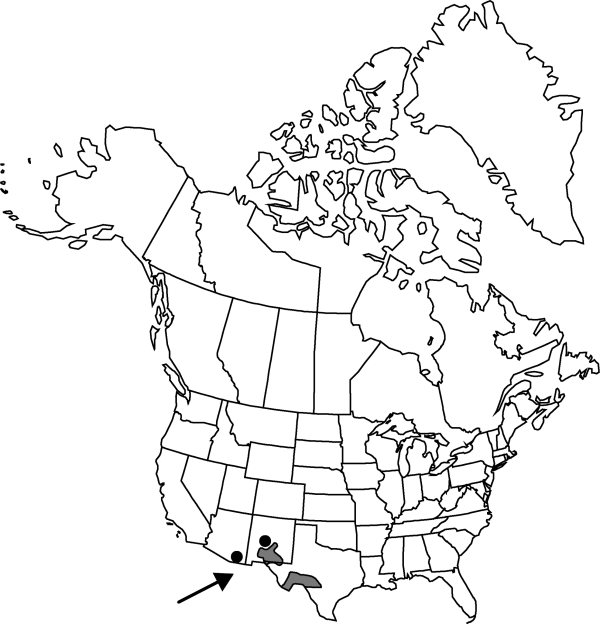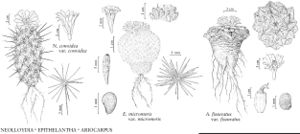Difference between revisions of "Epithelantha micromeris var. micromeris"
FNA>Volume Importer |
FNA>Volume Importer |
(No difference)
| |
Revision as of 22:23, 16 December 2019
Plants usually unbranched, appearing ashy gray and rough in general aspect. Stems short cylindric to ovoid, (1.3–)2–3.8 cm diam. Spines 20–35(–40) per areole, in 1–3 series, mature lateral spine clusters grayish or purplish white with brown bases, collectively appearing as brown spot at center of each spine cluster, 4–5(–7) mm diam.; longest intact spines near apex of stem 3–12 mm; worn spines 1–3 mm. Flowers partially obscured by longer spines at stem apex, 6–8.5 × 3–4.6 mm; inner tepals 5–8 per flower, (1–)2.5–3.5 × 1–2 mm; stamens 15–16. 2n = 22.
Phenology: Flowering late winter–early spring (Feb–Apr); fruiting late spring–early summer (Apr–Jun).
Habitat: Woodlands, deserts, grasslands, crevices, coarse gravel, cliffs, sedimentary (rarely igneous) substrates
Elevation: 500-1800 m
Distribution

Ariz., N.Mex., Tex.
Discussion
Epithelantha micromeris var. micromeris has the smallest flowers of any cactus species in the flora. Unlike other taxa in this genus, it is autogamous. No hybrids with E. bokei have been found. The spines of var. var. micromeris are never as strongly appressed as on E. bokei except on sexually immature plants less than 15 mm in diameter; those immature plants have the fewest spines.
Selected References
None.
